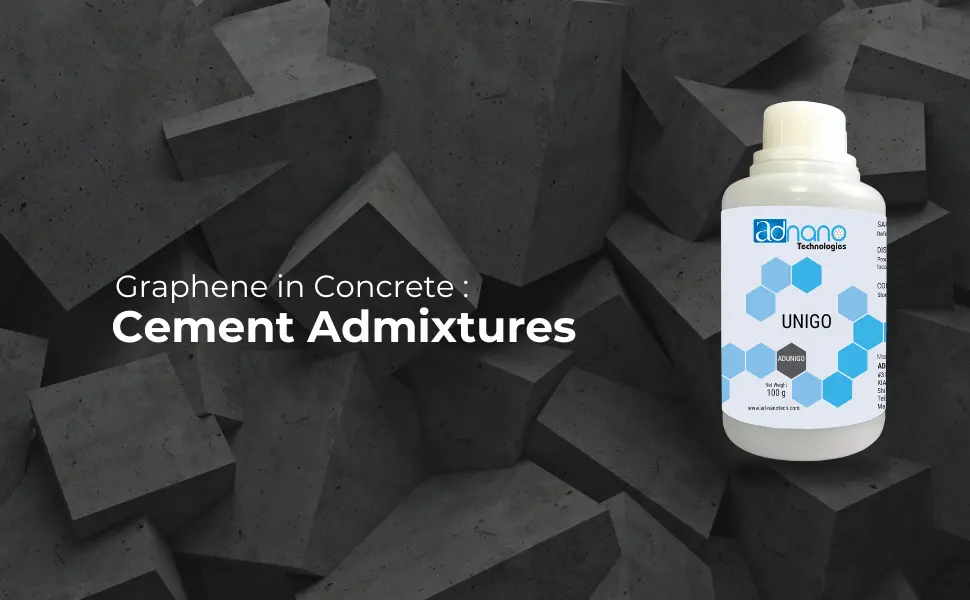Concrete has been the foundation of modern infrastructure for years. However, despite its vast use, traditional concrete faces challenges such as cracking, brittleness, and susceptibility to environmental damage. Graphene in concrete is a revolutionary advancement that promises stronger, more durable, and sustainable construction materials.
Why graphene in concrete?
Graphene, a single layer of carbon atoms arranged in a hexagonal lattice, is known for its exceptional strength, conductivity, and lightweight properties. When added to concrete, graphene greatly improves its performance by adding the following values:
- Mechanical strength
- Longer durability
- Less environmental effect
- Water and chemical resistance
UNIGO: Graphene Admixture
One of the most promising graphene-based solutions in concrete applications is UNIGO, the most innovative graphene-based Admixture for concrete developed by Adnano Technologies. UNIGO enhances the mechanical strength of concrete, ensuring better load distribution, increased compressive and tensile strength, and improved flexural strength. It also effectively prevents crack propagation, making concrete resilient under stress and significantly extending its lifespan. Just 50 ml of UNIGO enhances the compressive strength of a 50 kg bag of cement, making it an efficient and high-performance solution for the construction industry.
Advantages of Graphene in Concrete
1. Enhanced Mechanical Strength
- Several research studies indicate that graphene addition to concrete might increase its compressive strength by as much as 30–50%.
- Improves tensile strength, making the material more resistant to cracking and deformation.
2. Increased Durability and Longevity
- The addition of graphene makes the concrete more durable and increases its lifespan.
3. Improved Water Resistance and Reduced Permeability
- It decreases the porosity in concrete to prevent penetration of water, which, consequently, limits damage from moisture and chemical attack.
- This makes it ideal for marine and coastal structures, where water infiltration is a major concern.
4. Environmental Sustainability
- By incorporating graphene, less cement is required to achieve the same or better structural strength.
- Reducing cement usage leads to lower CO₂ emissions, making graphene in concrete an eco-friendly alternative.
- It extends the lifespan of buildings and infrastructure, reducing construction waste.
Implementing Graphene in Concrete
1. Uniform Dispersion in Concrete
- Proper dispersion of graphene in concrete mixtures is important to attain greater upgrades in properties.
- UNIGO Graphene Admixture has a solution for it. It gets easily dispersed without any external equipment.
Future of Graphene in Concrete
The global construction industry is beginning to recognize the transformative potential of graphene-enhanced concrete. Ongoing research aims to:
Optimizing techniques of graphene integration to get uniform dispersion
Developing smart concrete with self-healing and self-sensing capabilities.
Encourage sustainable construction practices, reducing environmental impact while improving infrastructure durability.
Conclusion
Graphene in concrete is the next big leap in construction materials technology. As it promises strength, durability, and sustainability, it could be the basis of modern infrastructure development. Graphene will undoubtedly dominate the field, especially in concrete formulation, for years to come. Stronger, smarter, and more sustainable construction solutions for the future. Graphene would play a major role in shaping the future of the industry.

